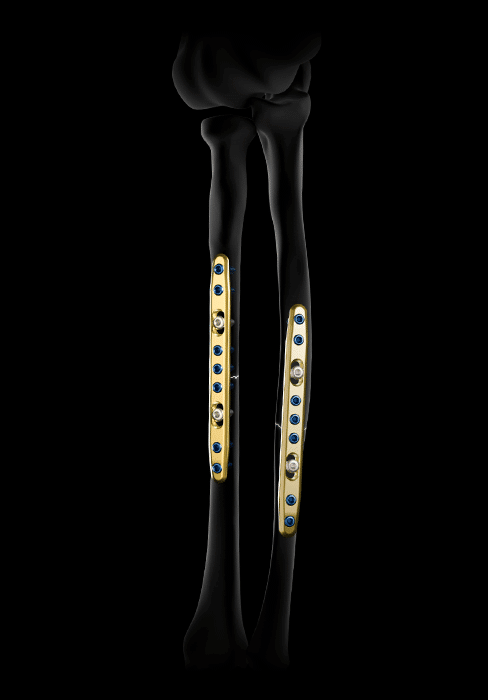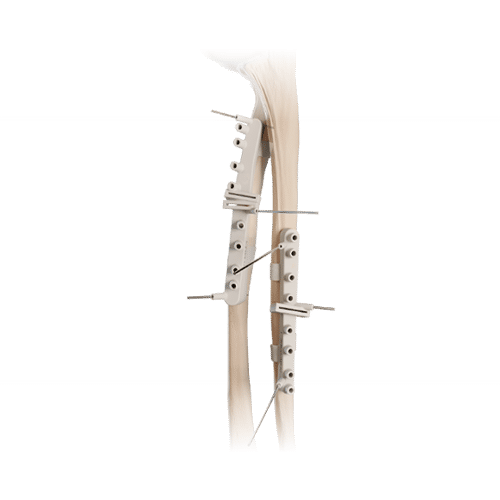The implants of the Alians Forearm range are intended for the fixation of fractures and osteotomies of the radius and the ulna in adults.
The Alians Forearm range offers plates designed to stabilize all types of fractures or osteotomies affecting the ulna or radius in the diaphyseal parts. Four sizes of implants are available to treat relatively extensive fractures. These dedicated plates and devices are combined in a single kit.
A suitable solution for the management of forearm fractures and osteotomies.

A range of implants and dedicated instrumentation for simple and complex forearm fixations :
- Symmetrical plates
- 4 sizes: 8, 9, 12 and 15 holes
- Corresponding lengths: 80, 100, 130, and 160 mm
- Monoaxial locking system for Ø3.5 mm screws

Key features of the Alians Forearm range.
- An intuitive and easy-to-use range
- Symmetrical plates available in 4 sizes, to suit various types of fractures
- A single screw diameter (Ø3.5 mm), whether locked or not
The ONE Platform.

ONE is the patient-specific correction guide solution designed to assist you in the 2D and 3D planning of your surgeries, as well as in performing your osteotomies. The manufacturing of our patient-specific cutting guides is the result of close collaboration between surgeons and Newclip Technics, to best meet surgical needs and support the surgeon throughout every step. These solutions are developed based on clinical imaging data to optimize anatomical congruence between the implant and bone tissue.
Learn more